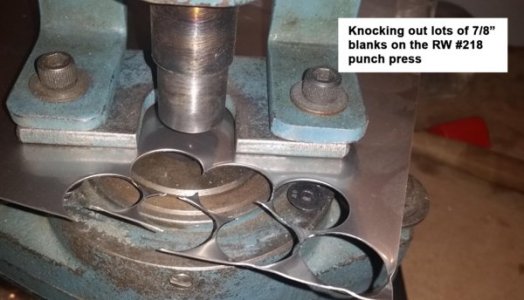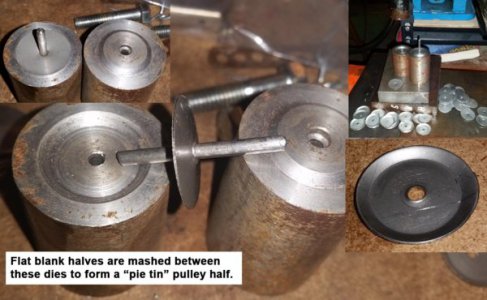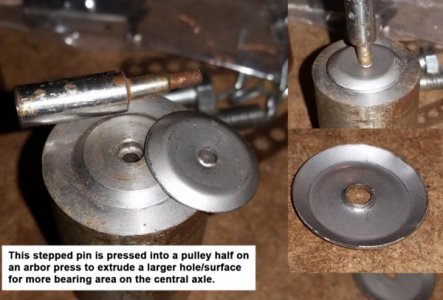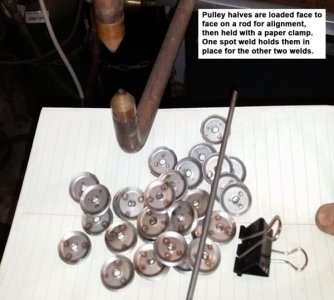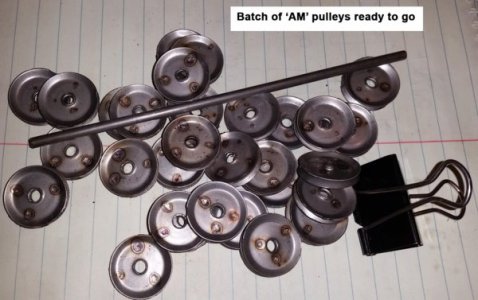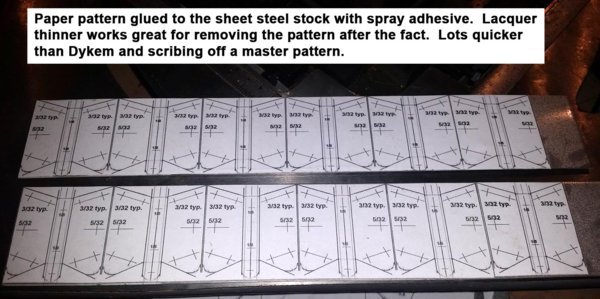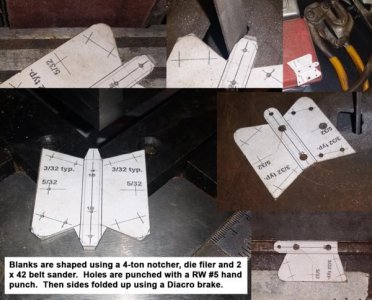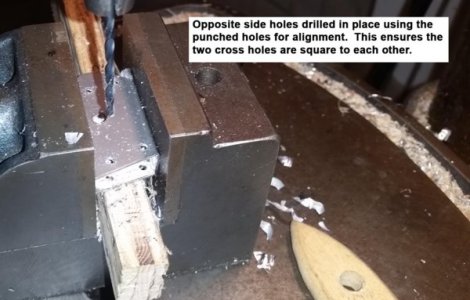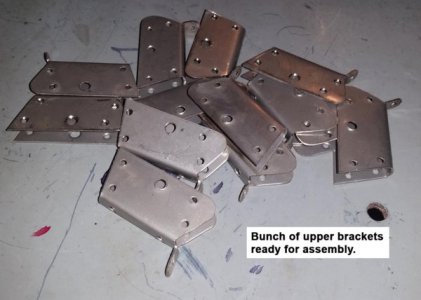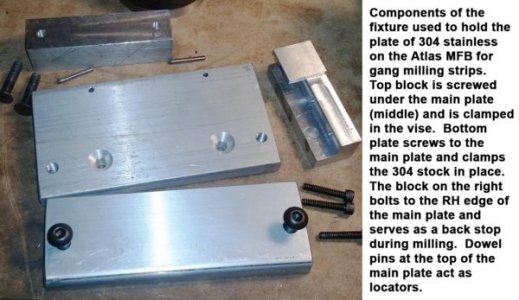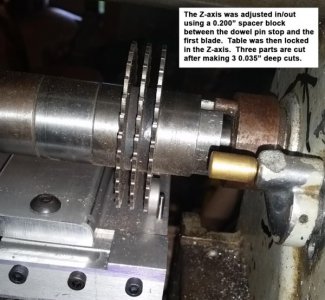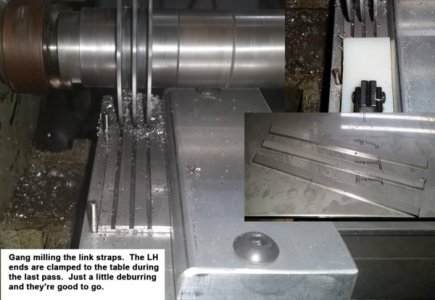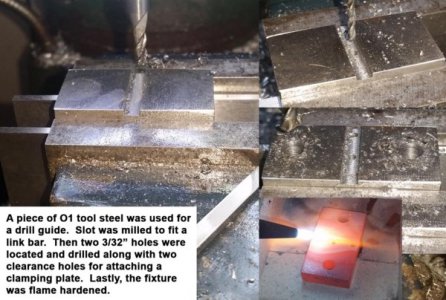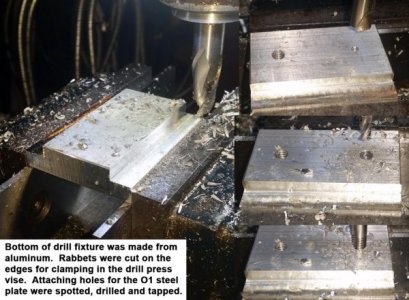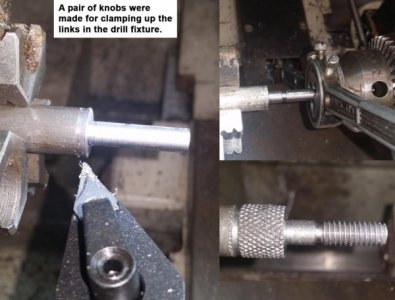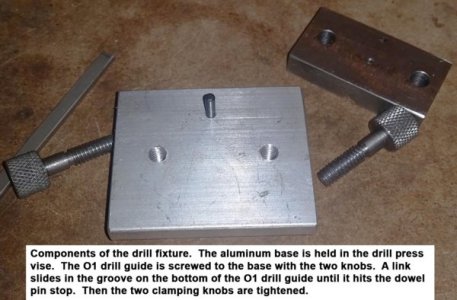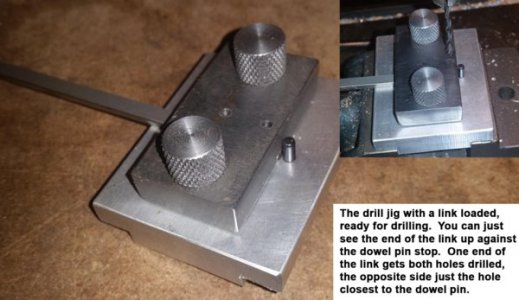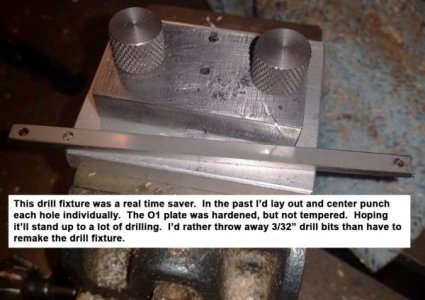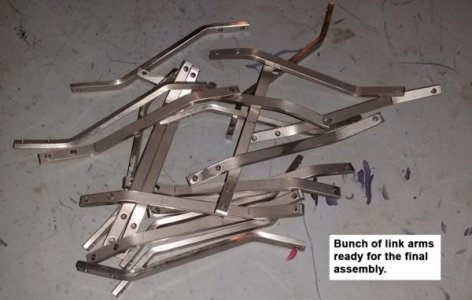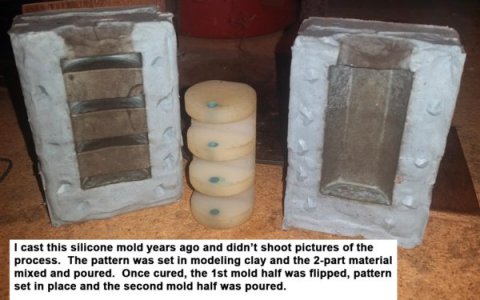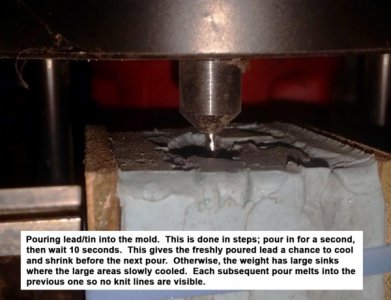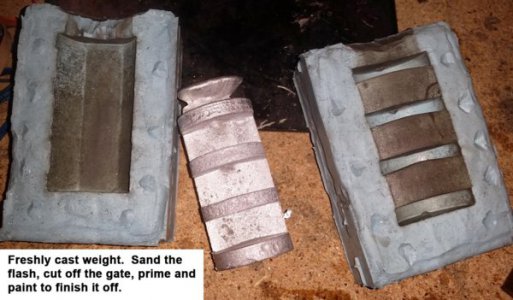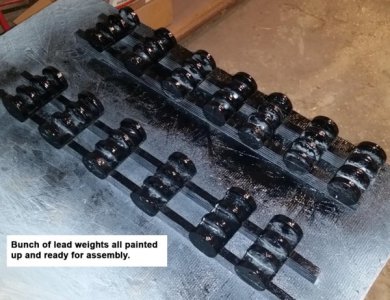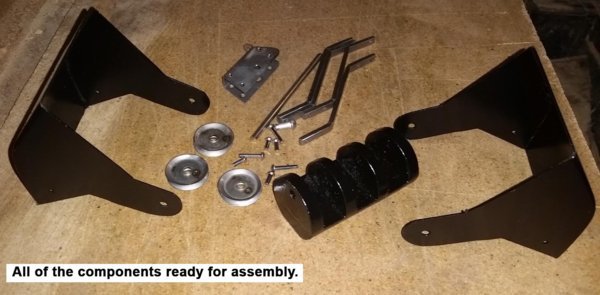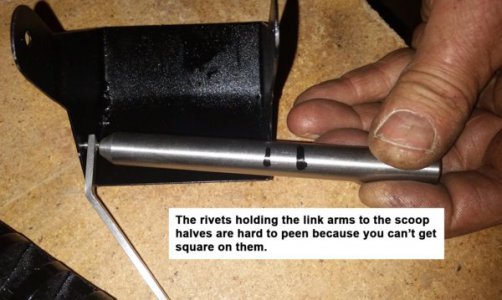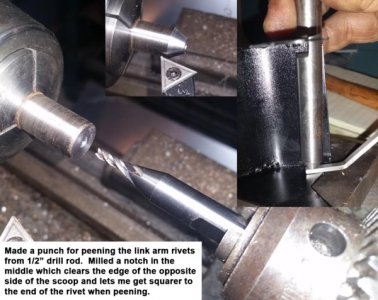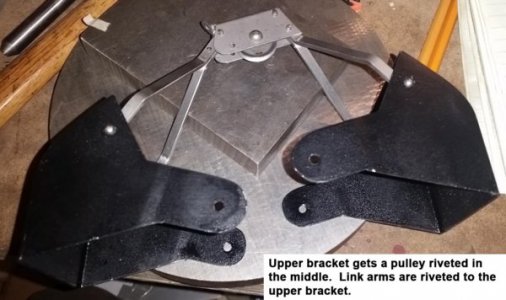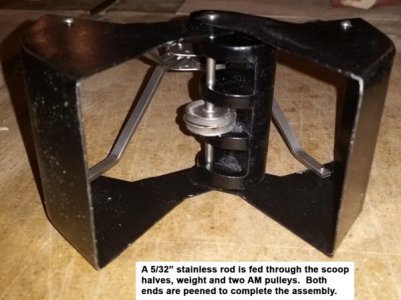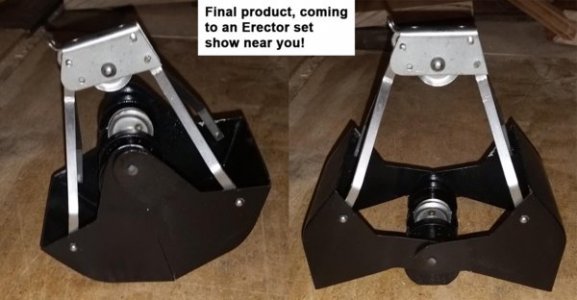- Joined
- Nov 23, 2014
- Messages
- 2,606
Here’s the build of another reproduction Erector set part. This one is part number ‘BM’, a clamshell bucket. First a quick history lesson. The ‘BM’ clamshell bucket was included in the largest set (No. 10) from 1927 – 1932. The bucket was nickel-plated in 1927 and early 1928, but switched to black-painted in late 1928 - 1932. The part was originally tooled by the Kelmet Corp. for a stiff-leg derrick toy and a pressed steel toy truck. A. C. Gilbert acquired the company in around 1926 and adapted some of the parts into the Erector set line including the ‘BM’ clamshell bucket.
Lots of details on this one; five major components are involved in the build of this part, plus the overall assembly. I’ll break each part up into its own post. The components are: Scoop, ‘AM’ pulleys, top bracket, links and weight.
The ‘BM’ has a weight at the center area that when dropped causes the bucket to open. Lifting up on the weight closes the bucket. There are pulleys on the top bracket and weight that were strung to axles/drums to pull/drop the string to work the bucket.
First the construction of the scoop. I acquired a sketch of the ‘BM’ clamshell from a fellow collector and made the pictured prototype for a proof of concept. The original scoops were made from 0.040” steel and were pressed in one shot. That’s beyond my capability, so I went with a folded up, then welded design.
I make up patterns using Adobe Illustrator and Photoshop. These are printed and glued to the sheet metal with spray adhesive. Lots quicker than making a master template that gets scribed to the blank. Trimming of the pattern was done on my Tennsmith shear, 4-ton notcher, 2x42 sander and Oliver die filer.
Two scoops are hinged at the center; for the bucket bottoms to come together flush to each other, the overlapped hinge areas need to be offset from each other by ½ the thickness of the blank. One side is pressed up, the other down. This is done on a 12-ton shop press with a sheet metal jig. Slip the hinge area of the scoop through the opening between the spot-welded jig and mash it on the press. The orientation is reversed for either bending the hinge area up or down.
Next it’s to the brake for folding up the sides of the bucket. The bottom of the bucket has a curved area which matches the side profile. Made a die set from Delrin and a piece of tubing for pressing in that profile on the shop press.
Once formed, the scoops are TIG welded and metal finished. Last step is to prime and paint them. I have a nickel-plating tank from Caswell Plating for making nickel scoops. If you’re interested, hit the web site www.girdersandgears.com and look under restoration projects. There’s a link posted there of me nickel-plating some parts. If I get ambitious, I may try making the scoops out of 304 stainless for the nickel-plated look or just plate some plain steel ones.
Bruce
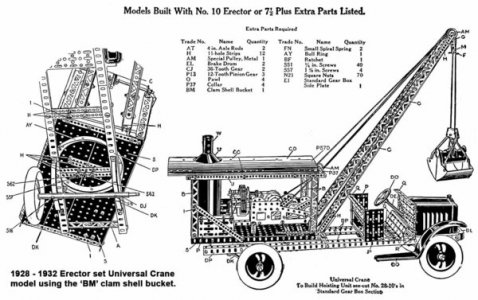
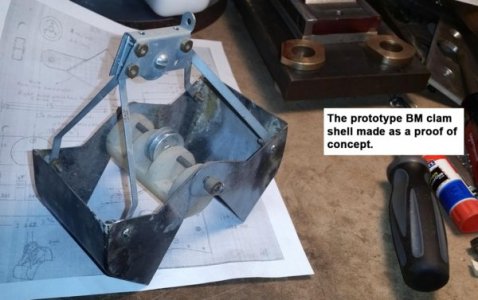
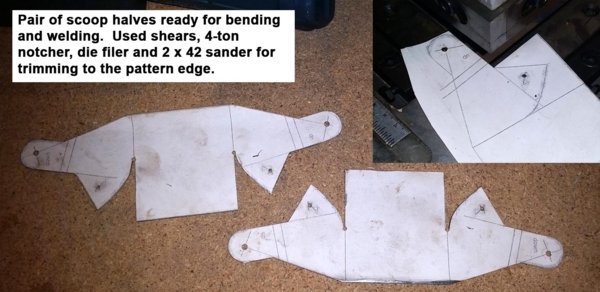
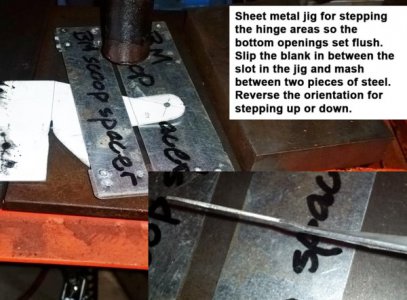
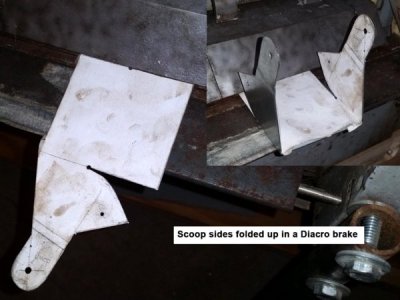
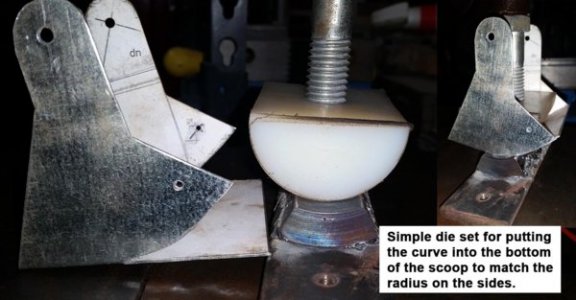
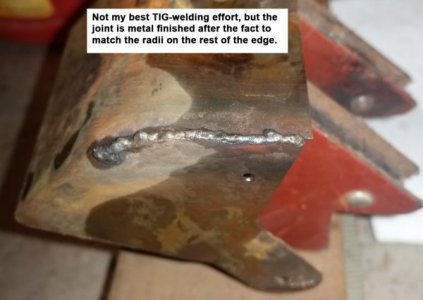
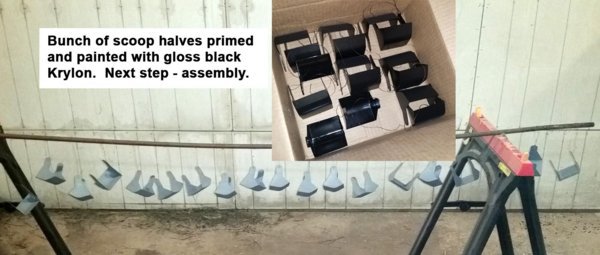
Lots of details on this one; five major components are involved in the build of this part, plus the overall assembly. I’ll break each part up into its own post. The components are: Scoop, ‘AM’ pulleys, top bracket, links and weight.
The ‘BM’ has a weight at the center area that when dropped causes the bucket to open. Lifting up on the weight closes the bucket. There are pulleys on the top bracket and weight that were strung to axles/drums to pull/drop the string to work the bucket.
First the construction of the scoop. I acquired a sketch of the ‘BM’ clamshell from a fellow collector and made the pictured prototype for a proof of concept. The original scoops were made from 0.040” steel and were pressed in one shot. That’s beyond my capability, so I went with a folded up, then welded design.
I make up patterns using Adobe Illustrator and Photoshop. These are printed and glued to the sheet metal with spray adhesive. Lots quicker than making a master template that gets scribed to the blank. Trimming of the pattern was done on my Tennsmith shear, 4-ton notcher, 2x42 sander and Oliver die filer.
Two scoops are hinged at the center; for the bucket bottoms to come together flush to each other, the overlapped hinge areas need to be offset from each other by ½ the thickness of the blank. One side is pressed up, the other down. This is done on a 12-ton shop press with a sheet metal jig. Slip the hinge area of the scoop through the opening between the spot-welded jig and mash it on the press. The orientation is reversed for either bending the hinge area up or down.
Next it’s to the brake for folding up the sides of the bucket. The bottom of the bucket has a curved area which matches the side profile. Made a die set from Delrin and a piece of tubing for pressing in that profile on the shop press.
Once formed, the scoops are TIG welded and metal finished. Last step is to prime and paint them. I have a nickel-plating tank from Caswell Plating for making nickel scoops. If you’re interested, hit the web site www.girdersandgears.com and look under restoration projects. There’s a link posted there of me nickel-plating some parts. If I get ambitious, I may try making the scoops out of 304 stainless for the nickel-plated look or just plate some plain steel ones.
Bruce










